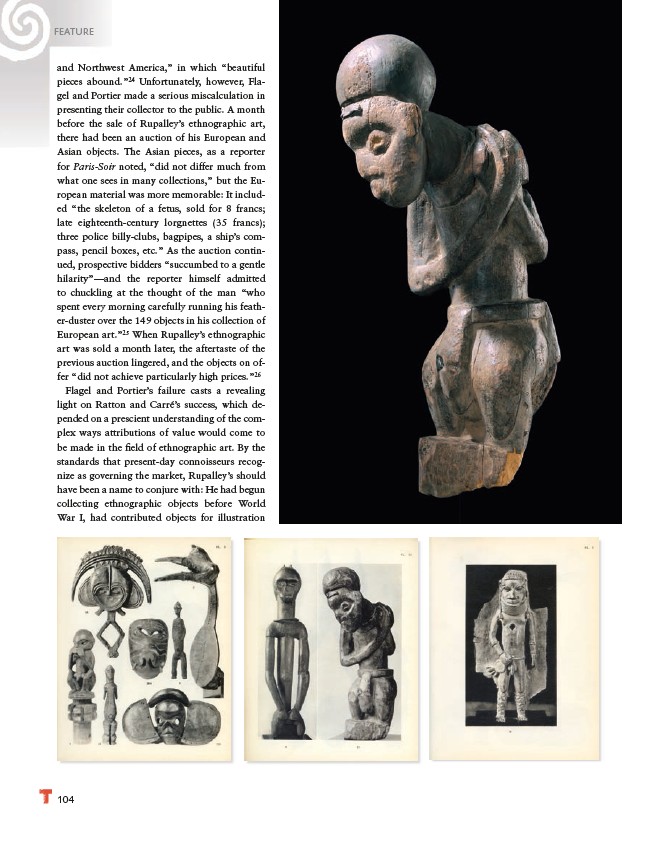
FEATURE
and Northwest America,” in which “beautiful
pieces abound.”24 Unfortunately, however, Flagel
and Portier made a serious miscalculation in
presenting their collector to the public. A month
before the sale of Rupalley’s ethnographic art,
there had been an auction of his European and
Asian objects. The Asian pieces, as a reporter
for Paris-Soir noted, “did not differ much from
what one sees in many collections,” but the European
104
material was more memorable: It included
“the skeleton of a fetus, sold for 8 francs;
late eighteenth-century lorgnettes (35 francs);
three police billy-clubs, bagpipes, a ship’s compass,
pencil boxes, etc.” As the auction continued,
prospective bidders “succumbed to a gentle
hilarity”—and the reporter himself admitted
to chuckling at the thought of the man “who
spent every morning carefully running his feather
duster over the 149 objects in his collection of
European art.”25 When Rupalley’s ethnographic
art was sold a month later, the aftertaste of the
previous auction lingered, and the objects on offer
“did not achieve particularly high prices.”26
Flagel and Portier’s failure casts a revealing
light on Ratton and Carré’s success, which depended
on a prescient understanding of the complex
ways attributions of value would come to
be made in the fi eld of ethnographic art. By the
standards that present-day connoisseurs recognize
as governing the market, Rupalley’s should
have been a name to conjure with: He had begun
collecting ethnographic objects before World
War I, had contributed objects for illustration